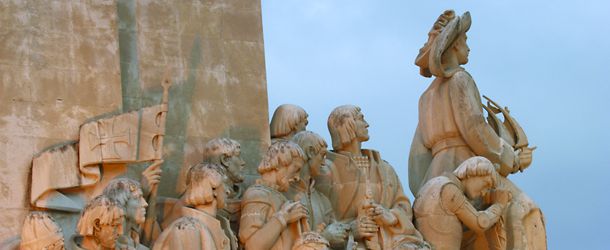Portugal’s culturally-rewarding capital is a popular port of call on many a Mediterranean cruise, or indeed any cruises which explore the Spanish and Portuguese coasts. With a distinguished maritime history, amazing architecture and of course, a pleasingly warm climate, it’s a great city to explore.
Legend has it that Lisbon was founded as Olisippo by the Greek king Ulysses when he left Troy, though it began to grow in prominence when it was integrated into the Roman Empire. The Romans built fortifications, baths and a theatre in the city and it prospered under their rule. In 711, it was occupied by Muslim forces and recaptured by Portuguese crusaders in 1147 and became Portugal’s capital in 1255. It continued to prosper as a centre for trade, enjoying its peak during the 16th century when many of its key buildings were erected. In 1755, the city was destroyed by a huge earthquake which took the lives of thousands of its residents and destroyed most of its key structures. It was however rebuilt and survived an invasion by Napoleon and several revolutions to become the globally-renowned city that it is today.
Culture
Lisbon’s brimming with cultural attractions and there’s much to experience during your visit. Belem Tower is one of the city’s most popular landmarks, which can be found in the neighbourhood of the same name. It’s quite a climb to the tower, so a pleasurable tram ride is a great way to get there. Built in 1515 to protect the harbour, it survived the earthquake, making it one of the city’s most historic buildings. The architecture’s splendid on the outside, but you can also pay to enter the tower and climb to the top for some great views. The Saint Roch Church is another cultural must-see. Beautifully preserved, it’s great to explore, whether faith buildings are your thing or not and the interior is simply stunning, with plenty of gold and micro mosaic works. The Alfama neighbourhood is one of the best places for a stroll in Lisbon as it survived the 1755 earthquake and holds much of the city’s Muslim heritage. It’s also where you’ll find St George’s Castle, which dates back to the fifth century and offers a wealth of history and of course owing to its lofty location, the best views of Lisbon. An altogether more modern architectural feat is the 11-mile Vasco da Gama Bridge, which you can’t fail to miss if you go for a waterfront walk.
Nature and outdoors
One of the city’s most popular attractions and a given if you’re visiting with the kids, Oceanario de Lisboa is the city’s aquarium and was the focal point of the Expo ’98 World’s Fair. It’s much more than just a family attraction though and actively promotes oceanic knowledge and enlightens visitors about marine conservation issues. Its huge central tank is an amazing sight and holds a vast array of sea creatures. Lisbon Zoo is another great choice if you’re looking for family activities, where there are over 2,000 animals in spacious enclosures and a fun dolphin and sea lion show to enjoy, too. Outdoors in the city and a little away from the crowds, the Miradouro Sao Pedro de Alcantara is an area which boasts some attractive gardens and some great views.
Shopping, eating and nightlife
If retail therapy is on the agenda during your cruise to Lisbon, then be sure to head to the city’s most fashionable shopping district and its own little slice of Bohemia, Chiado. By day, you can peruse any number of high-end stores or if designer gear’s not in the budget, there are many tourist-centric stores, too. By night, it’s a lively place to explore with street music, live performers and a good choice of bars and restaurants. Baria Alto, meanwhile, is the perfect neighbourhood to visit if you fancy a slice of lively Portuguese nightlife. The area dates back to the 16th century but the bar scene is distinctly modern and there is a good choice of restaurants, too.
By Simon Brotherton
Google


Comments: no replies